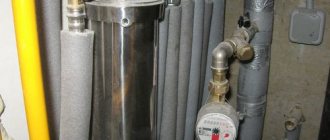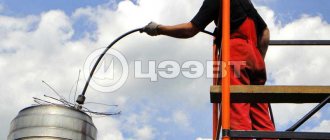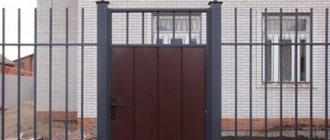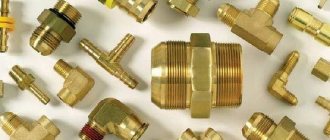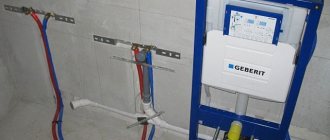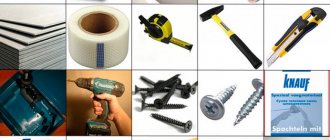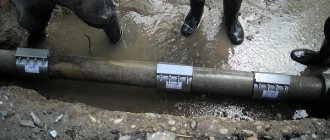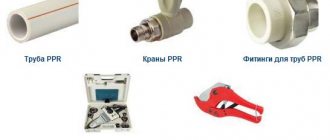Polymer materials are systematically replacing steel pipe assortments when arranging human life support systems in apartments (private houses). Plastic and composite products are superior to metal ones in most performance characteristics and, moreover, do not require deep professional skills for their installation. As a rule, you can replace steel pipes with modern analogues yourself. Polypropylene has gained particular popularity among plastic products.
Advantages and disadvantages of plastic pipes
Polymer products have a lot of advantages, among which it is worth highlighting:
- Long service life (modern plastic pipes can sometimes last about 100 years);
- Light weight of the material;
- Full resistance to corrosion;
- Ease of installation;
- Good strength properties;
- Good level of sound insulation;
- High elasticity;
- Environmental safety (plastic pipes do not change the chemical composition of transported water);
- Low degree of thermal conductivity;
- Versatility;
- Ease of transportation;
- Low cost.
The list of advantages looks impressive. The described qualities have provided plastic pipes with recognition and the title of one of the best materials for arranging any pipelines - it’s not just that old pipes are replaced with plastic ones in most houses and apartments.
Of course, plastic pipes also have disadvantages, but their list looks much more modest than the list of advantages:
- Polymer pipes have restrictions on the temperature of transported substances (specific values depend on the material);
- Variety of installation technologies (different technologies are used to install different types of plastic pipes);
- Susceptibility to certain types of alkalis and acids (when choosing pipes for transporting aggressive substances, you have to carefully study their characteristics).
Classification of plastic pipes
There are several polymer-based materials. The final products differ in their composition and production technology, so before purchasing you need to study them in order to choose the best option.
The following types of plastic pipes are found on the market:
- Metal-plastic (MP) . This material is made, as the name suggests, of metal and plastic. This combination can withstand exposure to both low and high temperatures – certain types of metal-plastic pipes can operate at a carrier temperature of 900 degrees. The main disadvantage of this material is its low flexibility, so bending the pipes must be done very carefully.
- Polyethylene (PE) . Polyethylene pipes can be installed even at sub-zero temperatures, which is why they are often used for urgent repairs. When choosing PE pipes, you need to pay attention to the fact that it can be designed to work under conditions of either low or high pressure.
- Cross-linked polyethylene (PES) . This material is made under pressure using various additives, and the method of its production is called “cross-linking” - hence the name. Cross-linked polyethylene can be used both in water supply and heating systems - the characteristics allow the pipes to operate at a fairly high temperature.
- Polyvinyl chloride (PVC) . One of the components used for the production of PVC pipes is chloride, the effect of which on the human body cannot be called positive. Polyvinyl chloride pipes are not used when laying household pipelines.
- Polypropylene (PP) . Polypropylene pipes are the optimal material for laying water supply systems. The multilayer design provides such pipes with good strength and the ability to operate at high temperatures. Among the disadvantages, it is worth noting very poor elasticity and the inability to painlessly replace individual elements - the connection of polypropylene pipes is carried out by welding, so the damaged areas will have to be completely cut out.
Deciding on the choice of material
Before you dive into work, decide on some questions. And the first of them is what kind of material to use in the apartment. The three most popular options have already been presented, so now let's look at their pros and cons.
Polypropylene water supply
Until recently, polypropylene pipes were the absolute champion when it comes to choosing materials for plumbing. They are almost not subject to wear, are relatively easy to install, do not conduct electricity, are heat-resistant, and reliable. But there are also disadvantages - for example, the connections cannot be separated, since the only truly reliable method of connecting one pipe to another is welding, and the only way to correct poor soldering is a pipe cutter.
Metal-plastic and reinforced pipes
An older version, originally from the 90s. It was then that the country was hit by a plastic boom and reinforced polymer was found almost everywhere, including water pipes. On the other hand, since polypropylene simply did not exist at that time, metal-plastic was indeed the best option, especially in comparison with galvanized (or even non-galvanized) Soviet steel pipes. Metal-plastic withstands physical impacts well, wears out slightly and looks great, but it also has disadvantages - it is much more expensive than its competitors and has an extremely negative attitude towards temperature changes, which is why it begins to leak after 2-3 seasons. On the other hand, it is even easier to install than polypropylene, so if you are making plumbing in a country house or other place where there is no electricity for welding yet, metal-plastic will be the best choice.
HDPE pipes (polyethylene)
A relative newcomer to the market, so it will be difficult to say exactly how good they are, but in theory everything looks just great - polyethylene pipes are not only durable, but also flexible, which allows them to be used even where a polypropylene or metal-plastic structure would be too bulky. In addition, they can freely change geometry, which provides a high level of protection against physical impact
On the other hand, heat resistance raises some doubts, but for water pipes this is still not so important, especially considering that the price of these pipes is lower than their polypropylene counterparts. Alas, they share a minus with polypropylene - the only truly durable connection method is welding
Replacing pipes with plastic ones - how to change them yourself
The first thing you need to figure out is how to replace metal pipes with plastic ones. This process is not very complicated, but the work must be approached with full responsibility - even the best material cannot compensate for incorrect pipeline assembly.
Before replacement, it is necessary to draw up a work plan, which in general terms looks like this:
- First you need to draw a plan on which all actions will be displayed;
- Next, the required amount of materials is calculated (if the plan was drawn up to scale, then you can use it);
- According to calculations, materials, connecting elements and tools for working with them are purchased;
- Immediately before starting work, the water is turned off;
- The old section of the pipeline is being dismantled;
- Plastic pipes are installed in the freed space;
- After assembly, the system must be checked for functionality;
- The last step is removing construction waste.
Knowing how to change pipes in an apartment and having a detailed plan will allow you to carry out all the work consistently and carefully.
Choosing the installation method
There are two methods of normal installation of plastic pipes - welding and press fitting. Welding is divided into two types - cold (using epoxy glue) and hot (using a welding machine).
Cold method
Cold welding is not only a method, but also the name of the main consumable when using it. Nowadays, almost every hardware store sells fast-hardening, reliable glue that allows you to firmly connect plastic pipes together. This method is more resource-intensive than hot welding, but does not require an expensive welding machine. It will also require a little more time - the glue needs to harden, and money, since the material, although inexpensive, requires a lot of it.
On the other hand, it prevents the appearance of sagging inside the pipes, which increases their normal service life. We recommend using this method, since durability and reliability are more important than immediate savings in time and money.
Welding
The classic method of joining pipes, not only plastic, but also metal. Requires a powerful power source, as well as a set of equipment - a welding machine, a protective mask, etc. This method is faster than cold welding and is traditionally considered more reliable. But, as studies have shown, cold welding is not inferior to hot welding in terms of speed and reliability. On the other hand, improper use of hot welding can lead to the formation of beads on the pipes, which is guaranteed to lead to pipe clogging in the next few years.
Dismantling old pipes
Dismantling an old pipeline is a process that needs to be approached individually. Some elements of the system may be able to be dismantled using a screwdriver or an adjustable wrench, while in other situations a grinder will be required.
The general set of tools required for dismantling comes down to the following list:
- Hammer;
- Bulgarian;
- Hammer;
- Chisel;
- Scrap;
- Sanding discs;
- Screwdriver Set;
- Knife;
- A pair of adjustable wrenches.
It will be ideal if the replacement of pipes with plastic ones is carried out together with the renovation of the home - firstly, you will not have to remove the garbage twice, and secondly, during the renovation it is much easier to hide communications in the walls, if such a desire arises.
Installation of plastic pipes
After dismantling the old parts of the pipeline, events can develop according to two scenarios:
- In place of the removed elements, parts made of plastic will be installed;
- The entire pipeline will be re-laid.
In any case, no matter what scenario is chosen, pipes will still have to be connected, and for this it is necessary to select the appropriate technology. In most cases, plastic pipes are connected using a special welding machine or installed using fittings.
Conclusion
Replacing plastic pipes with your own hands is quite possible and is not particularly difficult. First you need to draw up a detailed action plan - and half the work can already be considered done. Implementation of the plan will be the second part of the work, and after its successful completion all that remains is to rejoice at the updated pipeline.
Processing of pipeline ends
We treat the ends of the main pipeline with a “cleaner” and clear them of foil. The length of the treated surface should be equal to one half the length of the plastic coupling. Wipe the ends of the pipes dry with a clean rag. We do the same with the ends of the pipe section prepared for replacement.
We take a soldering iron, plug it into the mains, and place it on a special stand. You can find out what temperature is required for soldering in the store from a sales consultant.
Now we insert the upper end of the main pipe into the hole of the heated iron, and insert the coupling into this iron for soldering from the reverse side. With little effort, turn the iron until the plastic melts to an average level. Then we remove the coupling from the iron, release the end of the pipe from the iron and immediately, without delay, connect the molten ends of the pipe and the coupling. In this case, it is necessary to ensure that the parts are tightly joined when connecting, so that there are no irregularities or gaps.
The sequence of actions for soldering the remaining parts and components is similar to that described.
The main thing in this process is not to overexpose the iron. Otherwise, the parts may become deformed and damaged.
In addition, make sure that soldering is carried out on dry surfaces. That is, before starting soldering, carefully wipe the ends of the parts and let them dry completely.

